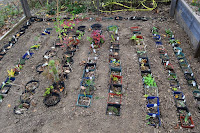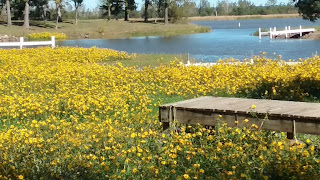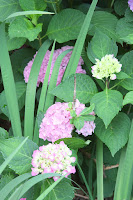A Few Winter Tips

Plant containers for cuttings When taking cuttings of cold hardy perennials for rooting over the winter, you can use your bare bed space to keep them outside. Instead of putting the containers on top of the soil where you have to keep them watered, plant the containers in the ground. The soil will keep them warmer, rain and snow will keep them moist and they can easily be covered late winter for getting jump start on growth. Clamshells for winter sowing I also use this method for planting seeds (in clear plastic clamshells) that need cold stratification to germinate. In these two are Agastache and Chinese Parasol tree. Over the next couple of weeks they will have lots of company. If winter sowing seeds is new to you, here are a few sites - http://wintersown.org/ - https://getbusygardening.com/winter-sowing-seeds/ - https://www.facebook.com/groups/wintersown/ - http://www.agardenforthehouse.com/2012/11/winter-s...



